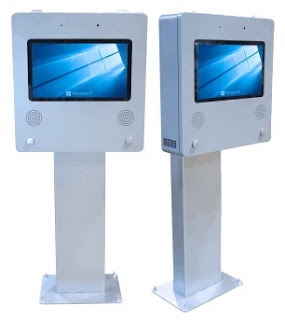In this digital environment, business events are quite the thing and attendees at business events definitely do not want to leave empty handed. Attendees these days have touch screens at their disposal which are truly game changers in terms of interaction and experience enhancement, revolutionizing the way events were traditionally perceived.
Here’s how incorporating touch screens into your presentations and
business events improves your audience interactions and takes them to higher
levels.
Benefits of Using Touch Screens at Events:
Interactive Engagement: Here screen facilitates the viewers to browse through the maps or flip through the product catalogs or look through the catalog, service or presentation being offered on the panel. This level of direct involvement certainly demands attention.
Real-Time Feedback: Another advantage of the touch panel is the ability to quickly collect feedback about the course, content through a survey, poll or a quiz immediately after the session ends. This increases the involvement of the participants and also gives valuable information about the content or events to be organized afterwards.
Dynamic Presentations: In the Changing Times, one would completely agree that no more slideshows of static images slowly transform one scene into the next through imagination. Thanks to touch panels which allow such presentations to be on demand and enable the integration of videos and animations and live presentations that can be changed much quicker which means content can never go out of date.
Streamlined Information Sharing: With touch screens, the participants are able to have information at their fingertips. Be it tracing the location of various booths, fetching pamphlets or getting to know the speakers, touch screens can be utilized as information points, making the event better organized.
Professional Branding: Having contemporary touch screens built into the space of your event provides benefits to the impression that is the one the brand represents. It indicates modern tendencies in design in a corporate world setting and makes clients, partners, and attendees.
In conclusion, knowing how to implement touch screens at your business events is an important strategy to increase the level of attendees' satisfaction, their interest, and help in making your event unforgettable. For smooth execution, touch screen displays offered by VRS Technologies LLC on rent is the best option as they have a variety of quality products with various specifications. Go ahead, use technology in your next event.
Using touch screens while planning and organizing your business events can lead to increase in social interactions and an overall higher level of engagement. For Touch Screen Rental in Dubai, UAE, VRS Technologies LLC should be your first choice.
Visit www.vrscomputers.com or contact us +971-55-5182748 for more information about our rental services.






